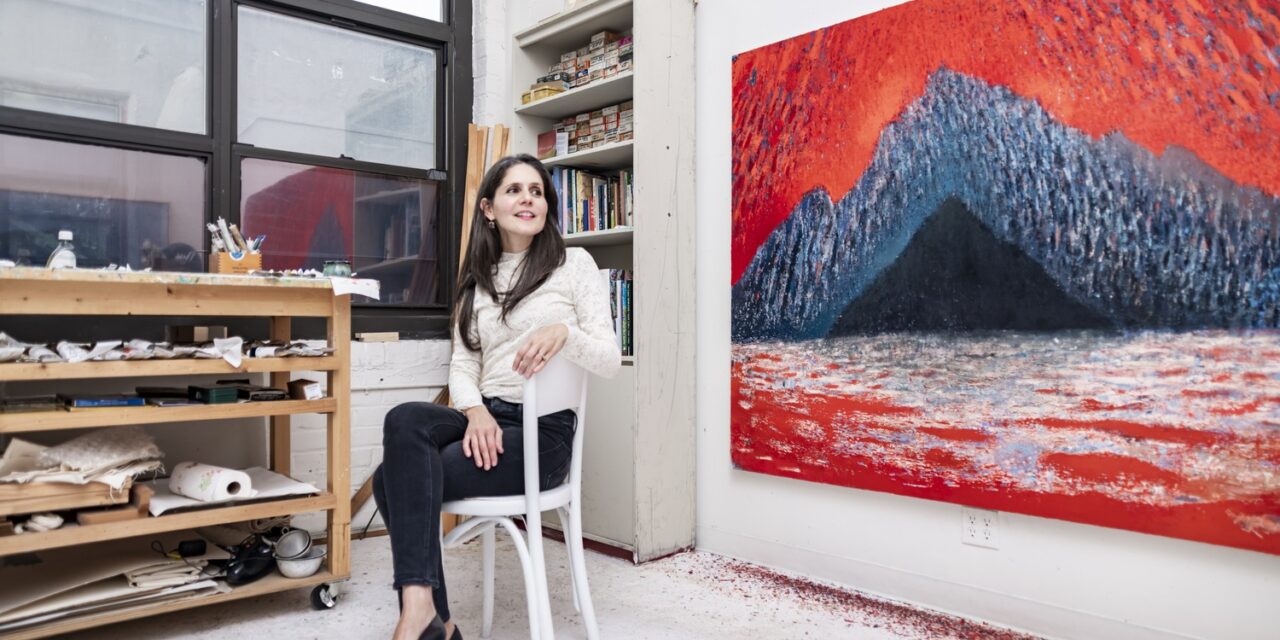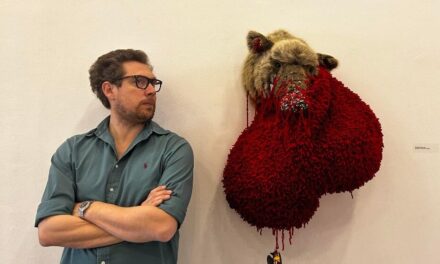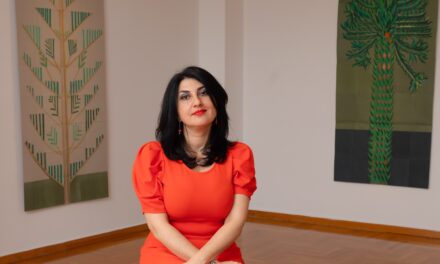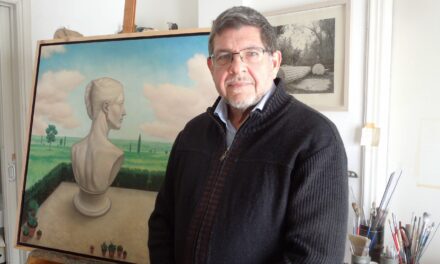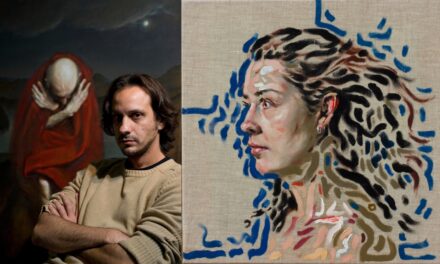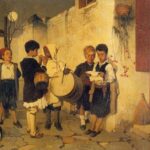Despina Konstantinides Cushing is a New York–based artist of Greek descent, renowned for her large-scale abstract and figurative contemporary landscape paintings that explore metaphysical inner spaces. Her paintings occupy the charged space between landscape and abstraction, where color, gesture, and form dissolve the boundaries of perception. Her painterly language fuses luminosity and introspection as she approaches the canvas as a site of inquiry—where form, color, and gesture reveal what words cannot.
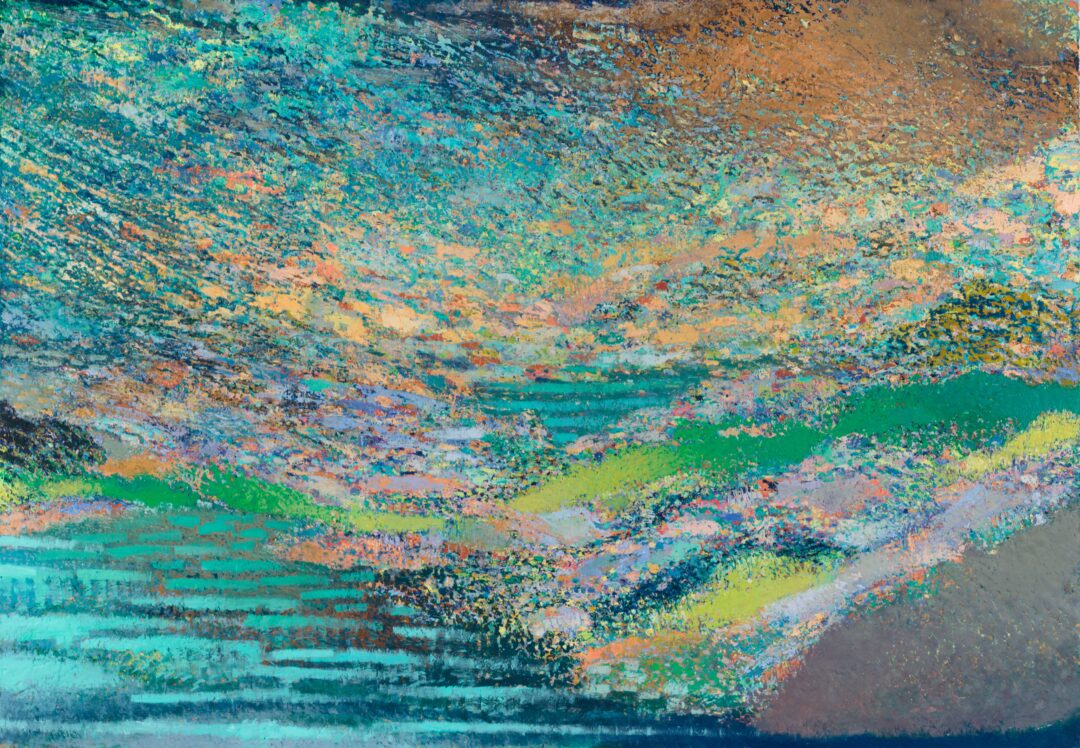
Despina K. Cushing invites viewers into a contemplative space where painting becomes an act of presence. They are invited not simply to see, but to inhabit—to dwell in the space between observation and introspection, where painting becomes both a world and a mirror, and the act of looking becomes an act of being. Her works are not depictions of places so much as meditations suggesting that true dwelling begins inwardly, in the stillness of perception and sincerity of soul.
Her landscapes resonate with sacred architecture and contemplative practice. They are neither purely representational nor abstract—they exist as spaces where philosophical inquiry, painterly experimentation, and metaphysical reflection converge, offering viewers a chance to dwell within both the painting and themselves. Rooted in her background in philosophy, Cushing paints not what she sees but what she knows through the mind’s eye—a sincerity of touch that turns pigment into presence.
Despina Konstantinides has earned a degree in philosophy from Trinity College, she pursued an MFA in painting from Indiana University. Her artwork is featured in prominent collections, including the Consulate of Greece in New York, the AIG Corporate Art Collection, The Delson, the George T. Douris Tower, and numerous private collections. Additionally, her work has been recognized on HBO’s hit show Divorce.
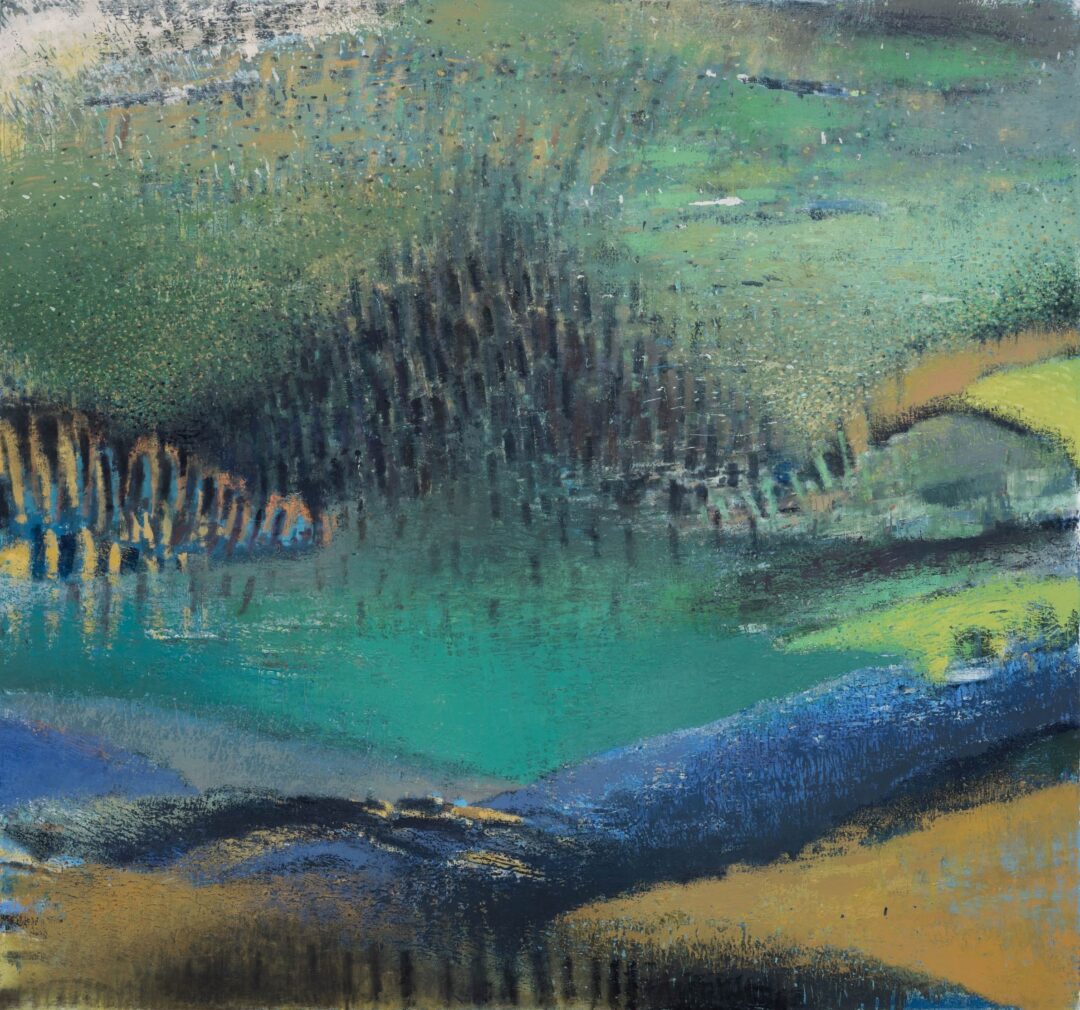
In an interview with Greek News Agenda*, Despina Konstantinides reflects on painting as an intuitive, improvisational process that balances landscape and abstraction to dissolve boundaries between inner and outer worlds, inviting both artist and viewer into a shared experience of presence and existential openness.
Your landscapes feel like they exist somewhere between the external world and an inner, rather metaphysical space. How do you balance abstraction and landscape in your work?
The balance comes naturally—abstraction and landscape need each other. The landscape image gives the viewer something to hold onto, a point of entry or anchor into the work, while the abstraction is where the takeoff occurs.
In an exhibition catalog essay from a previous show, Dr. Jennifer Samet wrote that my work “establishes a relation between losing oneself in nature and losing oneself in the process of painting.” I thought that was very well put, because it captures the play you mention between inner and outer worlds, between abstraction and figuration, and that blurring of thresholds is something of great interest to me.
Your creative process is mostly based on observation, memory or improvisation?
It’s closest to improvisation. I think of it as having an experience while painting, with the painting itself becoming a physical record of that experience. You paint, and suddenly a small section of the work begins to breathe on its own—that’s when the creative process begins. By “begins,” I mean a trust develops with the painting, and it shows you what it needs.
You are there to serve the painting. There’s no pre-intention, no thought like, “Wouldn’t it be interesting if I made the sky red?” If the sky is red, it’s because that’s what the painting needed. Creativity, to me, is learning to listen to the painting instead of listening to myself.

How has your background in philosophy influenced your painting practice?
John Dewey’s idea of art as experience has always fascinated me—the sense that you can lose the boundary between where you end and the world begins. An experience isn’t something you can simply name or describe; it’s something that transforms you. That dissolving of boundaries is what makes transformation possible and wherein art lies.
The title of your solo show, That which dwells, suggests a deep sense of presence. How do you see the act of “dwelling” reflected in your painting?
The title comes from a line in a Hölderlin poem: “reluctant to leave the place, is that which dwells near the origin.” To me, it’s about completely letting go. The closer you are—through meditation or a certain state of mind—to the unknown, the harder it is to release the everyday self, the part that clings to facts and definitions.
The paintings are not direct copies of landscapes; they are dwellings in the sense that they are concerned with being fully present—to dissolve boundaries and create a relationship with the viewer. They are more interested in the act of creativity than in depiction, and being fully present, to me, involves exactly that.
In my recent show, St. Francis in Ecstasy, I take this idea further, creating a contemplative space where viewers can engage with the work while being surrounded by the landscape visible through the windows.
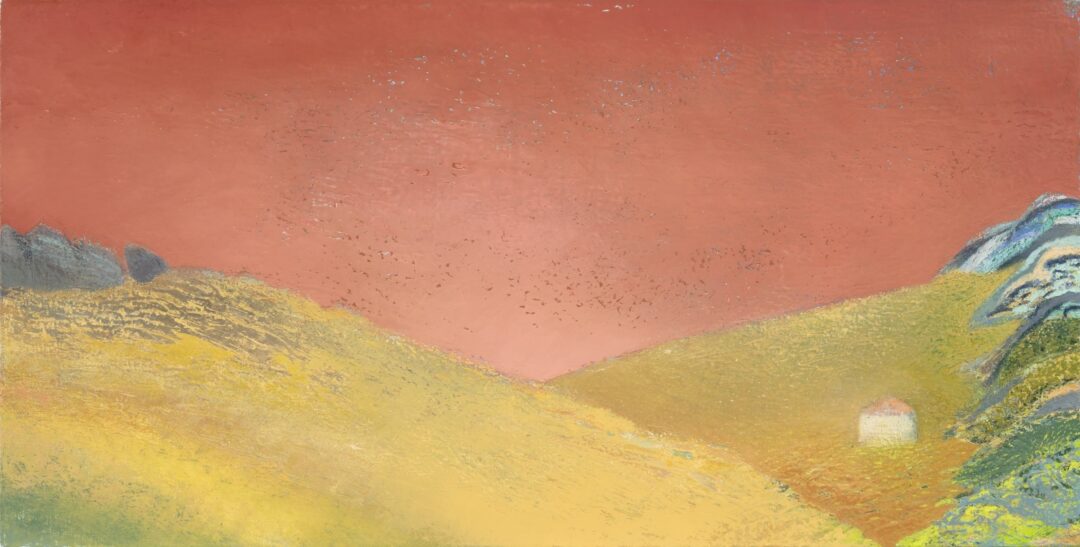
Looking back on your evolution as an artist, what moments or works of art that stand out as turning points in finding your own voice?
In grad school, the summer between the two-year MFA program, I spent time in Florence, Italy. There, I made oil pastels from life—works on paper—and my approach shifted from strictly representational to getting lost in the process of making the work.
Those pieces changed the course of my practice. Before that, I had been focused on simply copying nature—you know, getting the light right, the perspective, the color. When I returned from studying abroad, I made a few paintings that were in my mind—my first paintings, in a way. I had been looking at the work of Frank Auerbach and how he spoke about making his first painting, and I was intrigued by the idea. Beforehand, I didn’t even know what a painting was. I hadn’t questioned it beyond getting the light, value, and composition—all the formal qualities right—but I hadn’t thought about form itself. I began to think about what it means to find your own hand, your own voice, in a painting, and what it means when a painting references the real world but still holds its own.
What is the drive behind painting and what is the ultimate goal?
My drive has always been the same: to catch that fleeting glimpse of the greater existential unknown. To hover at the standstill between knowing what it means to exist and not knowing—entering that mystery again and again. Not because you’re ever going to solve it, but because the journey itself changes you.
The goal is to feel understood: to feel seen by the artwork. And when that happens, you open up. That’s where boundaries dissolve. That’s when the painting really begins to do its work. Paintings are like people. The ones you can’t shake off are the ones that have made you feel seen. And when you think of all great artworks that stay with you, it’s because they’ve done exactly that.
*Interview by Dora Trogadi
Artist’s portrait photo credit: Jinnifer Douglass
TAGS: ARTS

